Need a new handle for your Axe – this simple step by step guide will help
In this straight forward ‘how to’ article Robin Wood shows us the simple steps needed to create a new axe handle. This is for a short axe but you can use the techniques and know how to make an axe of any size for any axe head.
I have been asked a few times about how to do a new axe handle and was making one up last night so took some pics.
First wood selection. The perfect wood is nice straight grain ash fairly fast grown, if it gets more than 6-8 rings per inch it is much more brittle, 4-6 rings per inch is perfect.
Having said that a hewing axe like this is nearly always used one handed and the handle does not get the same stress as a felling axe so I would use pretty well whatever wood you have though with a preference for more fibrous species, ash, oak, elm, etc.
Split your log in half and half again then if it was a fat log you may be able to go down to 1/8th sections.
What you are aiming for is to cut out a bit of wood that looks like this, just a bit bigger all round than the axe of the axe. Draw round the inside of the eye on to the end grain. Grain direction does not matter with ash. I often see it suggested that this orientation with the axe head tangential to the growth rings is good and that radial is bad.
I find no difference, and all the technical data on ash I can find gives the same info. I think the pics of grain direction that are often repeated probably originate from old American sources and are referring to old growth hickory. In my experience ash is fine either way I I more normally end up using ti the other way just because when I split the wood out that ends up closest to the shape I want. Bows are made that way on too.
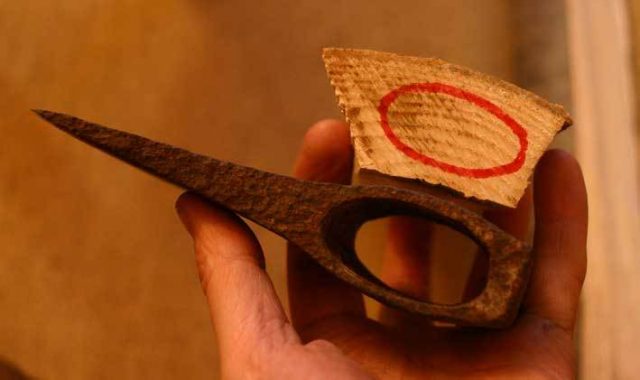
Next, if you have another axe handle you like draw round it on the side profile, or just draw a shape you like. Straight handles are fine; I prefer this shape.
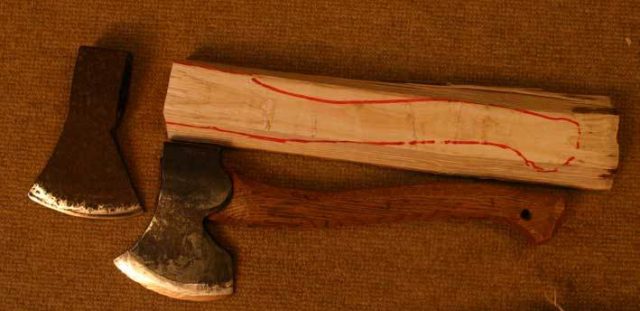
Cut the side profile trying to keep the edges at 90 degrees, at this stage we are not looking for a rounded profile just a nice clean rectangle.
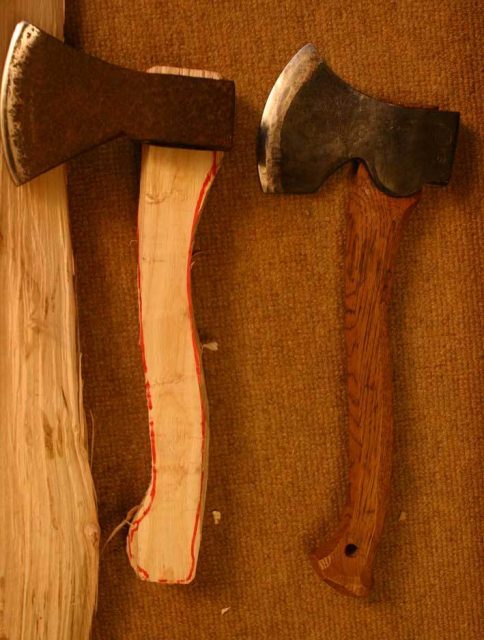
Thin the sides down if necessary again aiming for a clean flat plain.
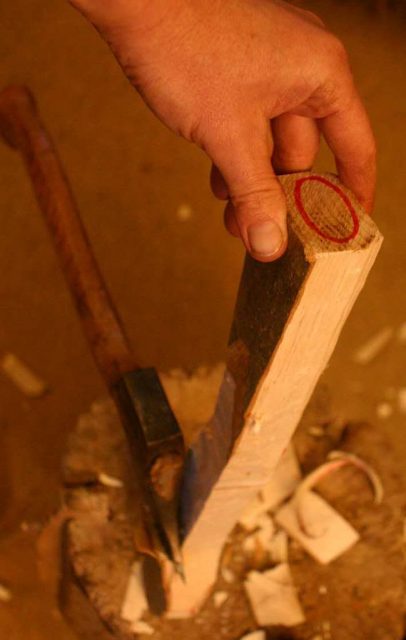
Now work over the surfaces with a knife to smoot the curved lines and leave nice clean cuts on the flats.
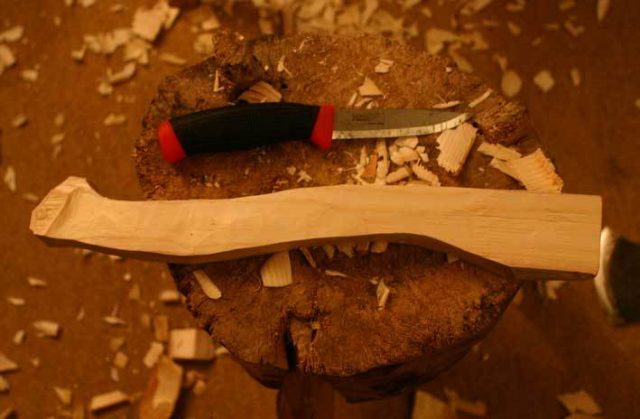
So now we have a rectangular section which is about 10-15% over size at the head and just a little over size on the handle. And we leave it to dry. This bit of wood was pretty dry already so 48 hours indoors will probably be enough. When it is dry if I tap it against something it will ring rather than thud and feel nice and springy. You can just leave it a month and be sure, but I am always impatient.
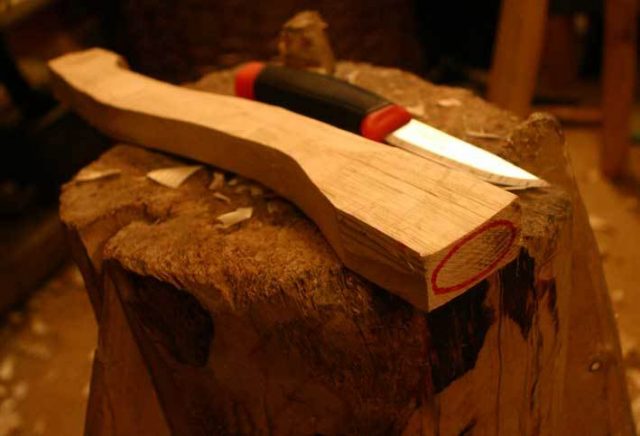
This is roughly how it will look when done. This is a cheap old head, I don’t know what the pattern is or where they were made but I have a couple like this, they don’t seem uncommon at car boots / garden sales, and I like the look of it as a carving hatchet. The other old head would make a perfect alternative to a small forest axe for someone on a budget.
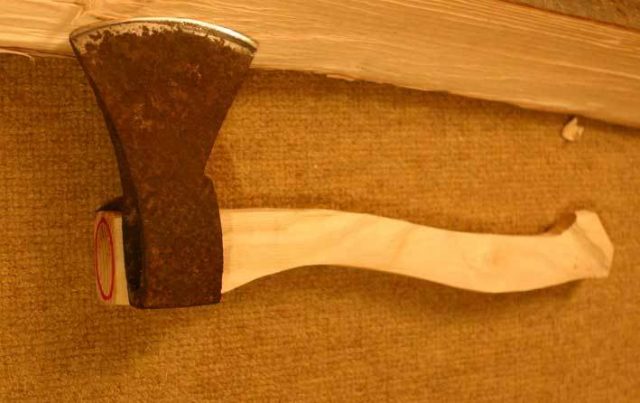
Thanks to ©BritishBlades for allowing us to use this article
If you have any comments then please drop us a message on our Outdoor Revival facebook page
we love this sort of thing on Outdoor Revival and we’ll be bringing you a lot more of it over the coming months, if you enjoy making or repairing your outdoor kit or if you have a good story to tell or blog let us know about it on our FB page, we’re also happy for article or review submissions , we’d love to hear from you.





